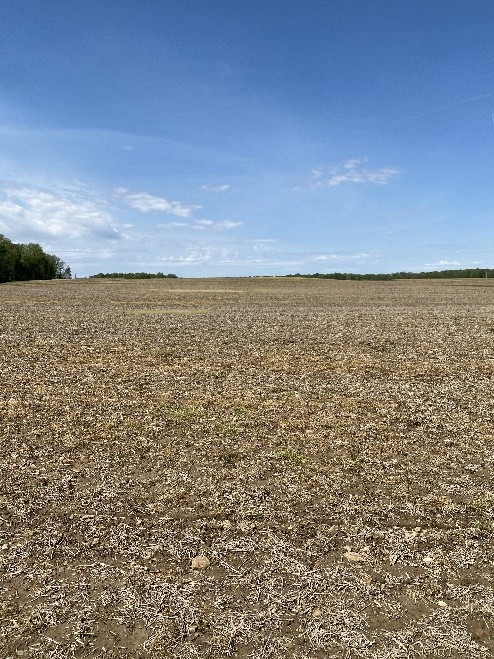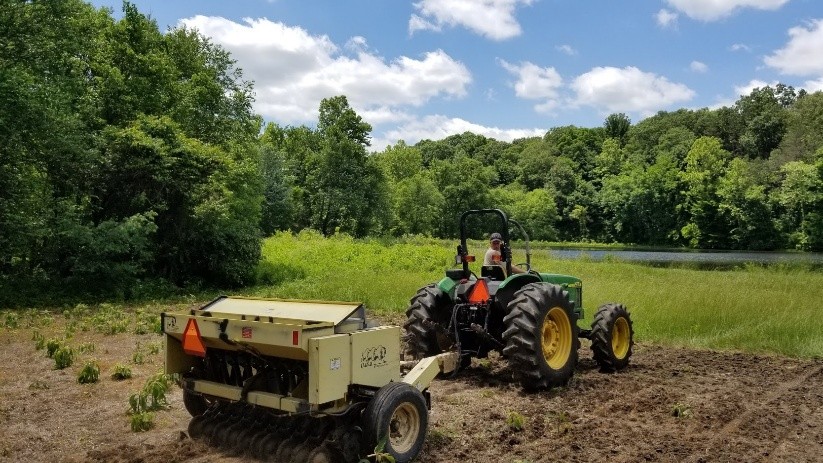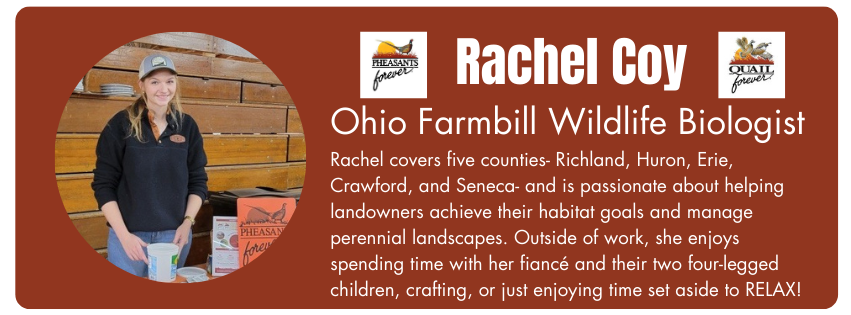Summer and fall are the perfect time to start preparing the land you’re considering changing to native wildlife cover. Whether you’re converting an old crop field or a turf grass/ lawn conversion, let’s discuss how to get the most from your planting.
Agricultural field conversions are easiest to complete due to the weed bed being suppressed for food production, and post-harvest you’re planting in a rather clean seed bed. Fields coming out of soybeans are the ideal landscape to plant in. If coming out of corn, fodder may need to be raked and baled off for adequate seed to soil contact.
Lawn conversions require a bit more site preparation than agricultural field conversions due to the aggressive nature of turf style grasses. Mow and allow the vegetation to grow back at least 6 inches. Then follow up with multiple blanket-herbicide applications, one application in the fall and spring are necessary to kill off the current cover. There are other methods for terminating grass cover currently established on the site if herbicides are something you’d like to steer away from, but each method has its own drawbacks on the environment and your planning timeline. Repeated tillage, solarization via black plastic and putting the parcel into a crop rotation for a few years are options as well.
When planting native stands, you can either drill in the seed or broadcast it across the surface of the soil. When drilling, ensure you’re using a Great Plains, native, no-till grass drill as native seed needs planted no more than 1/8 – ¼ inch below the soil surface. In my professional opinion, using a drill is most effective during the spring planting time frame, whereas broadcasting is most efficient in the dormant frost seeding season. By broadcasting seeds in the dormant season, we are able to mimic processes that occur in nature. The best time to broadcast seeds in this time frame is after a light snow. This way you’re able to see the seed as it’s placed across the landscape, ensuring an even rate of coverage. Set your broadcast spreader to ½ the recommended rate per acre and complete two passes, perpendicular to one another, for the most even coverage. When seeding native species, the planting windows are as follows: spring season (Mid-March – June 1) and the dormant season (December – Mid-March). Plating oats with the native seed is a great way to control soil stability in the first year of growth in the stand while native plants focus on their complex root structure.


In the first growing season of the stand’s life, multiple growing season mowings will need completed at a height of 10-15 inches. These mowings will reduce the completion the forbs receive from the grasses and allow for a more even mix in the stand. After the first year of establishment, full stand mows should never be completed, and a long-term adaptive maintenance plan should be generated and followed.
Once your stand is an established grassland, maintenance is required. Historically, nature did this for us, but human intervention has allowed many of our natural grass spaces to revert to early successional woodland habitat. The best tool for maintaining grassland habitat is prescribed burns done on 3–5-year return intervals. This will remove the thatch layer from the previous year’s growth as well as kill off any woody vegetation that may have infiltrated the stand. Spring burns encourage native grass growth whereas fall burns tend to generate more forbs or wildflowers in subsequent years. A good goal to keep in mind is to keep ½-2/3 of the stand standing entering each dormant season to provide continued resources and habitat for wildlife. Cycle through the field and by year 2-3, the field should have gone through a completed management round, and it is time to repeat.
Burns can be hard to accomplish with so much red tape in the way, lack of personnel and climatic conditions (i.e. draught) so utilizing mowing and tillage for management is a great alternative. Mowing for stand management should be completed after the primary grassland bird nesting season, March 1 – July 15. I encourage mowing management to be completed by mid to late August to allow for regrowth and better over winter habitat for wildlife and pollinators. Mowing maintenance should take place on 1/3 of the acreage and be cycled through similar to fire management. Depending on how much thatch accumulates on the stand, raking this cut vegetation may be necessary to avoid smothering desired growth and retain access to the bare soil.
Disking is also an excellent tool for creating additional bare ground in a dense stand, as bare ground is part of a pristine habitat for both wildlife and pollinators, and tillage helps rejuvenate the seed bed and allows annuals to flush out again. Be cautious of disking in areas with a history of invasive and noxious weeds, as disking will expose the existing seed bed and allow room for these unwanted species to take off. If this happens, don’t worry. Reach out to your local conservation office and we can help solve the issue, though following up with the establishment mowings during that following growing season is a great place to start to reduce annuals appearing in the plot. Some landowners are interested in the addition of food plots or shelterbelts near or adjacent to their grassland stands, which we can discuss more in another article.
For more information on establishing native cover reach out to Rachel Coy.
